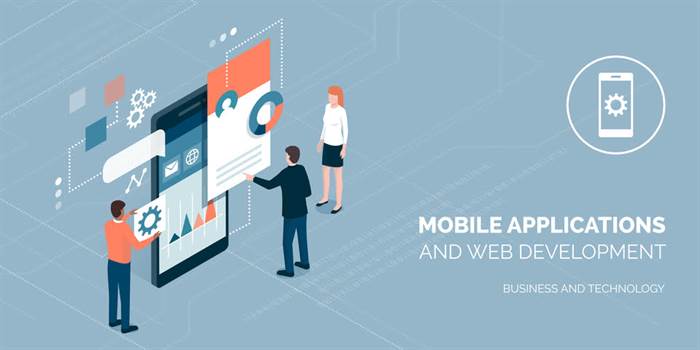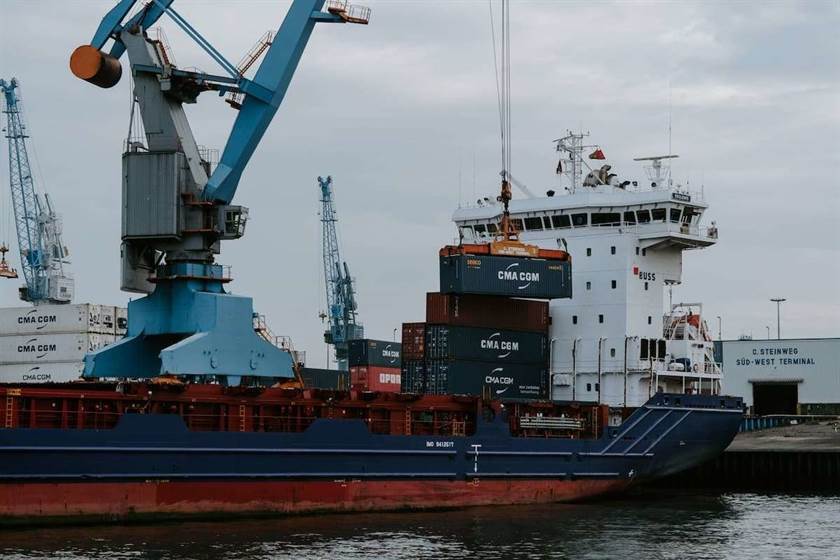In contrast, Data Fabric adopts a centralized strategy, with a unified data architecture and centralized governance. This centralized mannequin ensures consistent information high quality, standards, and management throughout the enterprise. However, it might lead to slower decision-making processes and potential bottlenecks, as all changes have to undergo a central team. Intuit, identified for monetary software program options like TurboTax and QuickBooks, has adopted a Data Mesh architecture to effectively handle their diverse and distributed data sources. The structure assigns different groups the accountability to handle their particular information domains, resulting in improved data quality, streamlined workflows, and fostering more productive cross-functional interactions.
Additionally, whereas domain groups become liable for their ETL information pipelines underneath an information mesh structure, it does not get rid of the necessity for a centralized information engineering staff. However, their duty turns into more focused on determining https://www.globalcloudteam.com/data-mesh-vs-data-fabric-key-differences-and-benefits/ the best knowledge infrastructure solutions for the data products being saved. A knowledge cloth framework provides a holistic approach to knowledge management where data flows freely and securely across the entire group.
The architecture permits data to remain distributed across completely different data stores, corresponding to databases, information lakes, or information warehouses while remaining interconnected by way of standardized interfaces and protocols. This strategy supplies the flexibleness to decide on the best storage and processing applied sciences for every domain’s specific wants. When choosing between Data Mesh and Data Fabric, organizations ought to carefully consider their current information architectures, knowledge administration processes, organizational constructions, and cultural readiness. It is essential to think about elements similar to scalability requirements, data complexity, regulatory compliance wants, and the desired balance between decentralized ownership and centralized governance.
Determining the most suitable architecture for your data platform grows increasingly essential as data merchandise emerge as key drivers of enterprise technique. Domino’s now describes itself as an “e-commerce company that happens to sell pizza”. With Domino’s AnyWare, prospects can order pizzas by way of Alexa or Google Home, Slack, text message, smart TVs, or Domino’s own web site or apps. That’s just one cause why Domino’s is ingesting a huge quantity of customer knowledge across eighty five,000 structured and unstructured knowledge sources.
- The U.S. Army—in reality, the whole Department of Defense—is adopting the info material framework to deliver probably the most relevant insights to its personnel across the globe, as quick as potential.
- While a knowledge mesh goals to unravel lots of the identical problems as an information fabric–namely, the issue of managing knowledge in a heterogenous information environment–it tackles the issue in a fundamentally different manner.
- A information cloth architecture facilitates data-centric instruments and applications to entry knowledge whereas working with various companies.
- In this case, the formation of information silos is prevented, and we provide the most environment friendly and quick use of decentralized, federated, and simultaneous interoperability with data mesh.
- In this publish, we’ll dissect the principle differences between these two architectures and information you to resolve which one fits your organizational wants the best.
Understand the broad spectrum of search and how information graphs are enabling knowledge catalog customers to discover far past data and metadata. Data mesh, however, relies on automation to abstract complexity and improve agility, enabling sooner response to altering business calls for for knowledge. Data fabric presents a quantity of advantages, including the combination and connection of an organization’s knowledge, enabling frictionless data sharing and self-service knowledge discovery. Data fabric offers numerous benefits to organizations in managing and leveraging their information assets effectively. Organizations can utilize an information fabric to outfit data from consumer workouts and see how cooperating with shoppers can offer extra value.
Streaming Information Platform
Managing numerous information sources and technologies inside a centralized architecture may be complex, requiring robust integration capabilities. Additionally, organizations could encounter resistance to the cultural shift in course of centralized knowledge management, especially in cases the place information possession was beforehand decentralized. With decentralized possession, there is a threat of knowledge silos rising across domains, resulting in potential inconsistencies and difficulties in achieving a unified view of enterprise information. Maintaining global information governance and adherence to requirements becomes more advanced in a distributed structure.
It supplies a versatile and scalable answer for managing data because it grows in quantity and complexity. Data Fabric uses synthetic intelligence to generate data semantics and perform knowledge integration mechanically, whereas humans do the identical. It could be good if context and implicit knowledge, critical in understanding a dataset, are greatest done by human domain consultants. Data Mesh could end in fewer silos as a result of it’s simpler to make datasets out there to other teams. As lengthy as they’re appropriately incentivized, information product house owners will try to combine their products with the other datasets throughout the enterprise. A data fabric architecture facilitates data-centric tools and functions to access information whereas working with diversified companies.

It connects disparate sources, codecs, and locations into a unified ecosystem, enabling real-time insights. Meanwhile, an information mesh provides a decentralized community of knowledge domains the place each is managed independently by cross-functional teams but remains interconnected through a shared set of principles and requirements. It advocates for a distributed model the place domain-oriented groups take ownership of particular knowledge domains, guaranteeing relevance, quality, and autonomy.
Ways Synthetic Intelligence Is Transforming Operations Management
Organizations accustomed to siloed knowledge possession may face resistance to relinquishing control and adhering to centralized information policies and standards. In today’s data-driven landscape, organizations are grappling with the complexities of managing and harnessing the ever-increasing volumes of knowledge. Effective data management strategies have turn into paramount for organizations to derive actionable insights, drive innovation, and maintain a competitive edge. Zalando, a leading online fashion retailer in Europe, has effectively carried out the Data Mesh idea.
Meet with our skilled team and learn the way Anomalo can help you obtain high knowledge high quality with less effort. Meet your all-in-one automated information quality monitoring platform for the enterprise. Many organizations build and maintain elaborate ETL data pipelines in an try and hold the information in synch. This additionally drives the need for “hyper-specialized information engineers” who’re tasked with maintaining the byzantine system working. Metadata activation and recommendation engine – The AI-powered CLAIRE engine learns your data panorama to automate thousands of handbook tasks.

And the pizza model is utilizing an information cloth structure to deliver that data together and provide a 360-degree customer view. A information fabric isn’t only a buzzword, however it’s a somewhat summary design concept. So let’s unpack what a knowledge material actually is, how it works, what it guarantees to deliver—and how it differs from the equally in style data mesh structure. Data mesh enables the delivery of customized information products by empowering domain teams to own the delivery of information merchandise. It’s essential to notice that the table above offers a simplified comparison, and organizations should conduct a radical assessment based mostly on their specific necessities and targets.
🔘 Area Possession
Now that we have a clear understanding of each data mesh and data material, let us examine these two approaches across various dimensions. In the search for architectural ideas and architectures to assist your massive data tasks, it all comes right down to discovering what works finest in your personal explicit needs. In your quest to build the best knowledge structure on your organization’s current and future wants, you have many choices. But fortunately for you, sure patterns have emerged from the maw that can allow you to on your data path, including data fabrics and data meshes.

Data mesh promotes a flexible information governance working mannequin by way of federated governance. By permitting organizations to reinforce the model in accordance with their particular wants, information mesh accommodates various domains and fosters a data-driven tradition. In essence, an information mesh is a paradigm shift in data structure that empowers domain house owners, promotes collaboration and autonomy, and enables knowledge democratization. It embraces the principles of data as a product, knowledge quality, and privacy, and aims to optimize using knowledge within a company. In Data Mesh, Data integration across many enterprise source systems typically requires domain-specific expertise in data pipelining; utilizing information fabric, domains do not must take care of underlying supply systems.
🔘 Knowledge As A Product
Some instruments distributors, including Informatica and Talend, offer a soup-to-nuts knowledge cloth that encompasses many of the capabilities mentioned above, while others such as Ataccama and Denodo, ship particular pieces of the info material. Google Cloud is also a supporter of the data fabric approach with its new Dataplex providing. Integration among the many varied components in a data fabric sometimes is handled via APIs and thru the frequent JSON data format. Learn extra about how you should use an information material to place your datasets to work across use circumstances similar to knowledge governance, customer 360 views, knowledge integration, and even trustworthy AI. By using a data fabric architecture, companies can analyze info extra comprehensively, producing in-depth insights that can help leaders make choices and seize new opportunities for growth. Data mesh structure is a decentralization technique, which means data is organized by a selected enterprise domain, with the goal of attaining coherence amongst a quantity of business areas.

This architecture advocates for self-contained, autonomous teams, who act as unbiased knowledge product homeowners. By leveraging principles similar to domain-driven design and self-serve knowledge infrastructure, Data Mesh empowers groups to take full accountability for his or her data, ensuring agility, scalability, and faster decision-making. To delve into finer element, Data Fabric emphasizes the significance of a unified, constant view of information across the organization. By offering a scalable and dependable structure, it enables environment friendly information integration, governance, and improves total information high quality and accessibility.
Data is owned and managed by every domain such as sales, human resources, or operations, the place each area operates its own infrastructure to create, store, and manipulate data. Both are well-liked (and somewhat abstract) ideas in information platform structure. A data cloth acts as a single supply of truth for information, enabling businesses to make informed decisions based mostly on accurate and up-to-date info.
Furthermore, profitable implementation requires vital organizational readiness and a cultural shift in the direction of domain-driven information ownership. Both Data Mesh and Data Fabric require significant cultural shifts within organizations, but the nature of those shifts differs. Data Mesh necessitates a tradition of decentralized information ownership and accountability, where enterprise domains take responsibility for his or her information products. This shift may be difficult for organizations with a deeply ingrained centralized knowledge management tradition. On the opposite hand, data mesh focuses on organizational change, empowering area groups to ship data products and selling a decentralized method to information ownership and custodianship.
In addition, it should give flexibility to make use of superior analytical and artificial intelligence approaches. With Metaplane’s knowledge observability platform, you can overcome common data high quality challenges and be positive that your knowledge is of prime quality and constant across the entire structure. Overall, a Data Mesh structure could be an optimal selection for organizations coping with complex knowledge fashions and requiring elevated scalability.
This could incorporate uniting fixed knowledge of various offers workouts, the time it takes to acquire a client regionally, and shopper loyalty KPIs(key efficiency indicators). Explore IBM’s fit-for-purpose information store that lets you scale AI and analytics with all of your data, wherever. Data mesh permits us to continue to learn from advantages corresponding to consistency whereas fixing the disadvantages of the data cloth. The company dramatically improved visibility into precise and projected money flows. This enabled it to better manage money positions and optimize the use of its working capital. BMC Software (BMC) helps corporations harness expertise to enhance the delivery and consumption of digital services.